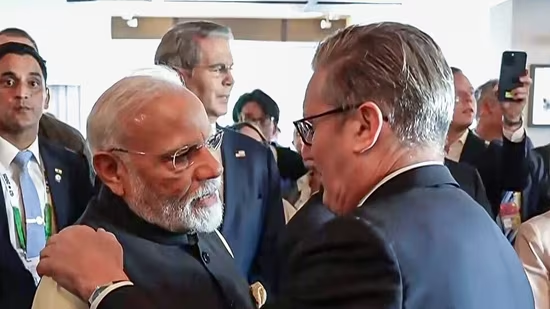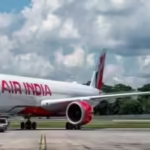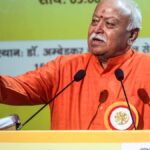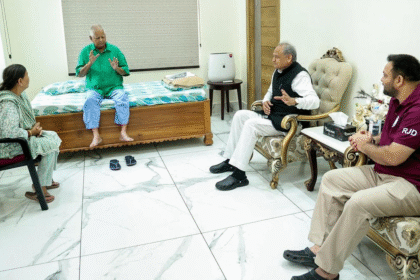The India-UK Trade Deal — A New Era of Economic Diplomacy
On the heels of growing geopolitical realignment and shifting global trade dynamics, Prime Minister Narendra Modi’s visit to the United Kingdom in mid-2025 marks a pivotal moment for bilateral ties between India and Britain. While diplomatic protocols, cultural exchanges, and defense cooperation remain important, the centrepiece of this visit is without question: a long-awaited Free Trade Agreement (FTA) between the two nations.
This deal, years in the making, signals not only an economic milestone but also a post-Brexit foreign policy recalibration by the UK and a strategic westward push by India. It is built on promises of reduced tariffs, mutual investments, and streamlined regulations—but beneath the surface lies a far more complex interplay of economics, influence, and domestic interest groups.
What Is the India-UK FTA and Why Does It Matter Now?
A Free Trade Agreement (FTA) between India and the UK seeks to eliminate or reduce tariffs, ease non-tariff barriers, and encourage cross-border commerce across a wide spectrum of industries. This includes automobiles, alcoholic beverages, pharmaceuticals, services, textiles, technology, and even professional visas.
The negotiations began in 2021 and saw 14 rounds of talks, often delayed by changing governments, elections, and unresolved sectors. But Modi’s current visit appears to have resolved final sticking points—particularly around British whisky exports and Indian automotive access—leading to an expected signing ceremony in London.
From a strategic lens, this agreement places India among a small list of countries that enjoy privileged trade access to both the UK and the EU, a rare diplomatic advantage post-Brexit.
Key Sectors Shaping the Agreement
While the FTA spans dozens of chapters and hundreds of regulatory clauses, a few industries have emerged as headline grabbers in public and political discourse:
1. Automobiles: Accelerating Indian Exports
India’s automotive sector—one of its fastest-growing manufacturing verticals—is expected to be a major beneficiary. British tariffs on Indian vehicles, currently ranging between 10% and 20%, are set to be significantly reduced or phased out within five years.
This opens new doors for Tata Motors, Mahindra, and Maruti Suzuki, as well as EV startups like Ola Electric and Ather Energy. The UK, seeking to meet its climate targets, is eager to import affordable electric vehicles, and India presents a cost-competitive source.
Moreover, auto components, an unsung export powerhouse for India, will now gain easier access to British assembly plants, potentially boosting tier-2 and tier-3 manufacturers back home in Pune, Gurugram, Chennai, and Bengaluru.
2. Whisky: Britain’s Liquid Gold Finds a Bigger Indian Market
British distillers have long complained about India’s 150% import duty on foreign spirits, particularly Scotch whisky. This FTA reportedly includes a gradual reduction of duties—down to 75% in the first year, and further thereafter—paving the way for a surge in exports from Scottish labels.
While Indian-made foreign liquor (IMFL) dominates domestic shelves, brands like Johnnie Walker, Glenfiddich, and The Macallan stand to benefit immensely. For the UK, this is both a cultural victory and an economic gain, with India poised to become one of the largest whisky markets globally by volume and value.
However, domestic Indian distilleries have raised red flags, worried about losing market share to global giants with deep marketing pockets. To address this, India has inserted a phased implementation timeline and origin-specific labeling norms to safeguard local players.
3. Services and Skilled Professionals: The Quiet Revolution
Beyond tangible goods, the FTA makes significant headway in the often-underrated sector of services and skilled labor mobility. Indian IT professionals, legal consultants, medical experts, and management personnel will now have easier visa access, longer stay durations, and faster credential recognition in the UK.
For India’s tech and startup ecosystem, this offers dual benefits: an exportable talent base and increased exposure to Western clients and capital. For the UK, still grappling with post-Brexit labor shortages, Indian expertise fills vital gaps in healthcare, fintech, and software development.
A Mutually Calculated Bet
This trade agreement is not a one-sided victory. It is a calculated bet by two sovereign powers with complementary needs—India seeks global trade expansion and manufacturing dominance, while the UK aims to rebuild global linkages and soften the economic fallout of Brexit.
But beyond the economic charts lies a bigger question: Will this deal withstand political cycles, implementation challenges, and lobbying backlash?
Framing the Deal: Domestic Stakes for Modi and Sunak
Free trade agreements, while technical in nature, are rarely just economic instruments. They are deeply political artifacts—framed, weaponized, or celebrated depending on the national moment and the government in power. The India-UK FTA is no exception.
In India: Modi’s Trade Diplomacy as 2025 Elections Loom
For Prime Minister Narendra Modi, the announcement of this trade deal during an official visit to the UK is more than just a diplomatic event—it is a strategic electoral card. With national elections approaching, Modi’s government has sought to project him not only as a domestic leader, but also as a global statesman securing economic wins abroad.
This narrative plays well with the urban middle class, small exporters, tech professionals, and aspirational voters who view international mobility, trade expansion, and global visibility as symbols of national progress. “From Scotch to software, India is rising” has become a popular catchphrase on social media and in political messaging.
Moreover, the optics of negotiating with a major Western power on equal footing further reinforce Modi’s brand of assertive nationalism and economic pragmatism.
In the UK: Rishi Sunak’s Post-Brexit Gamble
For UK Prime Minister Rishi Sunak, the stakes are equally high—but politically more volatile. Post-Brexit Britain has struggled to secure comprehensive FTAs, especially with large economies like the US, Canada, or Australia. The India deal is being presented by Sunak’s government as a major trade breakthrough.
However, the Conservative Party faces internal divisions. Some factions worry about increased immigration flows and job competition, particularly in services and labor mobility chapters. Others fear the perception of being too accommodating to Indian demands on whisky tariffs and visa relaxations.
Still, Sunak—a British-Indian himself—has pushed forward with a carefully curated narrative: that this deal symbolizes Britain’s modern, multicultural, globally integrated identity. It allows the UK to redefine itself as a non-European economic hub, especially in fintech, pharmaceuticals, and AI sectors where Indian firms are key players.
Opposition Responses: Criticism and Caution
In India: Concerns from Industry and Opposition Parties
India’s opposition parties, especially the Congress and Left, have raised several concerns:
- Job Displacement in Local Liquor and Auto Markets: With whisky imports likely to increase, domestic distilleries and allied industries may lose market share unless protected.
- Lack of Parliamentary Debate: Critics argue the deal was finalized through executive channels with minimal legislative scrutiny, bypassing broader consultation.
- Small Manufacturers Left Out: Many small and medium-scale enterprises (SMEs), particularly in textiles and ceramics, claim they were excluded from negotiation benefits and may face heightened competition.
In the UK: Labour and Liberal Democrats Express Worries
On the British side, the Labour Party has cautiously supported the deal, but highlighted several potential problems:
- Labor Standards: Labour MPs have asked whether Indian manufacturing sectors, especially textiles and automobiles, are adhering to ethical labor practices and environmental standards.
- Immigration Sensitivities: With the FTA reportedly allowing easier movement of Indian professionals and students, there is backlash from right-leaning media about pressure on housing, healthcare, and jobs.
- Transparency of Negotiations: Just like in India, several voices are calling for the full text of the agreement to be made public before ratification.
Public Sentiment: A Mixed Yet Optimistic Landscape
Despite political noise, public sentiment appears cautiously optimistic in both nations—though with differences in emphasis.
In India: A Symbol of Global Confidence
Among India’s youth, business community, and middle class, the FTA is seen as a badge of global credibility. Indian social media has lit up with memes about Scotch whisky becoming affordable and electric cars hitting London streets “with a Made-in-India label.”
Exporters, especially in pharmaceuticals, software services, and chemicals, are calling this the “UK Gateway Moment”, viewing it as a validation of Indian competitiveness.
Yet, trade unions and regional industry bodies—especially in alcohol production states like Goa, Telangana, and Maharashtra—have asked for clarity on domestic protection mechanisms.
In the UK: Eyes on Whisky, Jobs, and Migration
In the UK, reaction is more cautious. The spirits industry and financial services are celebrating the deal, but the working class in Midlands and Northern England—once core Brexit supporters—remain skeptical. Concerns about job outsourcing, immigration, and weakening of “British-made” protections are being amplified by tabloids and populist voices.
However, younger demographics, especially in urban centers like London and Manchester, view the India deal as a smart hedge against stagnant EU talks. The fact that Indian startups like Zerodha, Infosys, and Byju’s already operate in the UK adds to that comfort.
A Deal in the Spotlight, Not in the Shadows
The India-UK Free Trade Agreement is not happening quietly in bureaucratic corridors. It’s happening under spotlights—with massive public interest, political positioning, and media spin.
What will matter most now is not just what’s written on paper, but how the agreement is implemented, how transitional pain is handled, and whether both governments can frame the deal as a long-term national asset rather than a short-term electoral stunt.
Decoding the Fine Print: A Deal Beyond Optics
While the optics of Prime Minister Narendra Modi and UK Prime Minister Rishi Sunak shaking hands for the cameras might dominate headlines, the real story lies in the meticulous and layered documentation that defines the Free Trade Agreement. A trade pact of this scale—between one of the world’s fastest-growing economies and a post-Brexit global power—is anything but simplistic. Each clause, schedule, and annex carries enormous economic, legal, and diplomatic implications.
This part unpacks the key components of the deal, examining who benefits, what’s protected, and how the agreement lays the foundation for a deeper economic partnership in the decades ahead.
Tariff Reductions: Whisky In, Auto Parts Out
For the UK: Big Wins in Alcohol and Financial Services
One of the most celebrated concessions for the UK is the slashing of tariffs on Scotch whisky. Prior to the deal, India imposed a 150% import duty on spirits—a major barrier to British exports. Under the FTA, this has been reduced significantly in phases over the next five years. By Year 5, the duty will settle at around 50%, making premium Scotch more competitive in India’s growing luxury market.
This has delighted UK distillers, especially those in Scotland, who anticipate a 30–40% surge in exports.
Other tariff relaxations include:
- Reduction in duty on UK cheese and chocolates.
- Removal of non-tariff barriers on packaging and labeling norms.
- Preferential treatment for UK banking and insurance companies in Indian regulatory processes.
For India: Textile, Pharma, and Auto Component Advantages
India, on the other hand, secures major tariff concessions in sectors that dominate its export profile to the UK:
- Zero-duty access for textiles and garments, particularly cotton and handloom products.
- Reduced tariffs on generic pharmaceuticals, which had previously faced regulatory bottlenecks and long approvals.
- Duty-free exports of automobile components—a huge win for Indian suppliers in Pune, Chennai, and Bengaluru.
Interestingly, fully assembled cars did not make it to the zero-duty list—a calculated move by India to protect its domestic manufacturing base, particularly under the ‘Make in India’ campaign.
Services Sector: Visas and Digital Trade
Mobility of Professionals: A Diplomatic Tightrope
Perhaps the most sensitive chapter was on labor mobility and services—a domain where India pushed hard, and the UK treaded cautiously.
Key gains for India include:
- Temporary access for 20,000 Indian professionals in IT, architecture, healthcare, and education under a new Special Work Visa Quota.
- A faster visa clearance track for Indian startups, investors, and students.
- Mutual recognition of degrees and qualifications in several disciplines, especially engineering and accounting.
However, this came with strings attached:
- No blanket liberalization. The UK retained control over visa approvals and imposed annual caps.
- Exclusion of lower-skilled workers—something Indian trade unions have criticized.
Digital Trade: E-Commerce, AI, and Data Flow Rules
In an era where goods are just one part of trade, digital commerce is becoming the frontier of modern FTAs. The India-UK deal includes:
- A moratorium on customs duties on e-commerce transactions and cross-border digital goods.
- Agreement on open data flow with adequate privacy safeguards—aligned with India’s upcoming Digital Personal Data Protection Act.
- Collaboration frameworks on AI ethics, digital innovation, and fintech regulation, including support for India Stack adoption in UK-backed platforms.
Intellectual Property and Patent Provisions
A major point of contention was the IPR (Intellectual Property Rights) chapter, particularly around pharmaceutical patents. The UK sought TRIPS-plus protections, which would have extended patent terms and restricted Indian generic manufacturing.
India successfully negotiated the following:
- No data exclusivity clause that would delay generic drug entry.
- Protection of traditional knowledge through a dedicated registry in partnership with the UK Patent Office.
- Joint cooperation on IPR training and enforcement, especially in music, cinema, and digital content.
This has been hailed by public health experts and Indian pharma associations as a win for affordable healthcare globally, not just in India.
Sustainability, Labor, and Climate Commitments
Modern FTAs aren’t just about commerce—they also touch upon values and responsibilities. This deal includes a robust chapter on:
- Labor standards, ensuring no child labor or unfair practices in exports from either side.
- Environmental regulations, committing both countries to avoid products that breach climate accords.
- A Carbon Border Adjustment Mechanism (CBAM) dialogue, with provisions to protect Indian MSMEs from punitive climate taxes in the UK.
Dispute Resolution: A Hybrid Model
Trade disputes between countries can drag on for years. This FTA has agreed to a hybrid arbitration system:
- First step: Bilateral consultation within 60 days.
- Second: Panel-based adjudication.
- Final appeal: Use of WTO Dispute Settlement Body (DSB), unless both parties agree to private arbitration.
A Legal Architecture for the Future
This is not a backroom deal—it’s a legally binding architecture, intricately designed to govern everything from a single bottle of whisky to billion-dollar fintech startups. With clauses ranging from visa norms to AI regulation, the India-UK FTA exemplifies the complexities of modern international trade in a globalized, digital-first world.
From Policy to People: Trickle-Down or Tangible Transformation?
Trade agreements are often celebrated in policy circles and business summits, but their true success is measured not in boardrooms but in the lanes of Ludhiana, the fisheries of Kerala, the whisky distilleries of Glasgow, and the start-up incubators of Manchester. In this part, we move beyond legal frameworks and tariff charts to examine how the India-UK FTA will impact everyday stakeholders: small businesses, farmers, middle-class consumers, students, and state governments.
MSMEs and Small Enterprises: India’s Quiet Winners
Easier Market Entry, Lower Costs
India’s Micro, Small and Medium Enterprises (MSME) sector employs over 110 million people and contributes nearly 30% of India’s GDP. The FTA unlocks several opportunities for these businesses:
- Reduced compliance burdens for exporting to the UK, especially in textiles, ceramics, leather, and auto parts.
- Simplified packaging, labeling, and certification norms, allowing faster time-to-market.
- Access to UK’s retail and e-commerce networks, including platforms like Tesco, Marks & Spencer, and Ocado.
For example, a handloom exporter from Varanasi or a leather craftsman in Kanpur can now send goods with fewer bureaucratic hurdles and lower entry tariffs.
Support for Women-Led Enterprises
The agreement includes a dedicated chapter on gender and trade, offering UK-backed funding and incubation for women-led Indian MSMEs, particularly in rural clusters. This includes priority access to UK buyers, mentorship, and digital capacity-building.
Impact on Indian Farmers and the Agricultural Sector
While agriculture was not the core of the deal, India’s agri-exporters stand to benefit from:
- Relaxed phytosanitary and food safety checks for mangoes, bananas, and spices.
- Duty-free access for basmati rice and organic produce.
- Pilot schemes to sell GI-tagged Indian products (like Darjeeling tea or Alphonso mangoes) in UK gourmet chains.
However, Indian farmers remain cautiously optimistic:
- There is no large-scale opening for UK agri imports, safeguarding domestic markets.
- Concerns remain about whether benefits will reach marginal farmers or be captured by large agri-export houses.
The Silent Issue: Climate and Agro Standards
UK consumers demand stringent sustainability standards—zero pesticide residues, ethical labor, traceability. India will need to modernize its agri supply chains to match these expectations. While this could lead to higher incomes, it may also require infrastructure investments and farmer training.
Middle-Class Consumers: Cheaper Imports, But Not Overnight
One of the most public-facing benefits of any FTA is cheaper consumer goods. The India-UK deal promises this in phases:
- Scotch whisky, English cheese, premium chocolates, and UK-made cosmetics will see gradual price drops over five years.
- UK electronics and home appliances will see marginal cost benefits, particularly where Indian tariffs have been relaxed.
- Indian consumers in metros like Mumbai, Delhi, and Bengaluru will likely be the first to see these changes.
But it’s important to temper expectations:
- No immediate 50% price drops—tariff cuts are phased and may be offset by supply chain costs.
- Retailers and distributors often retain margin gains, so benefits may not trickle down without regulation.
Indian Students and Skilled Workers: Broader Avenues, But With a Catch
Over 120,000 Indian students study in the UK every year. The FTA creates a smoother path for:
- Degree recognition, especially in engineering, accounting, and medical fields.
- Post-study work rights for up to 2 years under the new bilateral mobility framework.
- A ‘Young Professionals Exchange’ program, allowing 3,000 Indians aged 18–30 to work in the UK annually for 2 years.
Caution Points: Not a Free Pass
The FTA does not grant permanent immigration pathways.
- Visa quotas are limited and tied to high-skilled sectors only.
- Lower-tier workers, caregivers, and retail staff do not benefit.
Still, for India’s aspirational middle class, the deal enhances access to the UK job market, particularly in tech, medicine, and finance.
Startups, Tech Ecosystem, and Digital Creators
This deal is the first India-UK pact to include a digital trade chapter, a major boost for India’s:
- IT services firms: Faster clearance, protection of source code, and access to UK government procurement contracts.
- Fintech startups: Opportunity to scale in UK sandbox environments.
- Digital creators: IP protection for music, film, and online content sold in the UK.
Cross-border e-commerce rules are also simplified, allowing Indian sellers on Amazon UK or Etsy to operate with reduced overheads.
Impact on UK-Based Indian Diaspora and SMEs
For the 1.7 million-strong Indian-origin population in the UK, the FTA is seen as a homecoming of sorts:
- Diaspora entrepreneurs can now invest in India with reduced repatriation taxes and smoother entry rules.
- UK-based Indian businesses can source cheaper raw materials from India.
From Hounslow to Leicester, Indian restaurants, retail chains, and travel agencies expect to benefit. A second-generation British Indian software founder noted that the FTA “bridges our emotional roots with economic opportunities.”
State Governments in India: Who Gains the Most?
The FTA has asymmetric regional impacts:
| State | Key Gains |
|---|---|
| Maharashtra | Auto components, fintech, IT exports |
| Gujarat | Pharma, diamond polishing, textile exports |
| Punjab | Basmati rice, agri produce, handicrafts |
| Tamil Nadu | Garments, leather goods, automobile parts |
| West Bengal | Tea exports, MSME craft sector |
The Centre has urged state-level export councils to gear up with training, policy alignment, and logistics infrastructure to maximize the FTA’s benefits.
A People’s Pact, Not Just a Paper Pact
This deal is not just an economic contract between two governments. If implemented wisely, it could be a bridge between aspirations and opportunity—transforming the lives of artisans, farmers, students, shopkeepers, and digital entrepreneurs. But the benefits are not automatic—they require logistics, digital infrastructure, legal awareness, and fair access.
Also Read : Air India Flight AI315 Catches Fire Mid-Air En Route to Delhi; Aircraft Grounded for Urgent Probe








